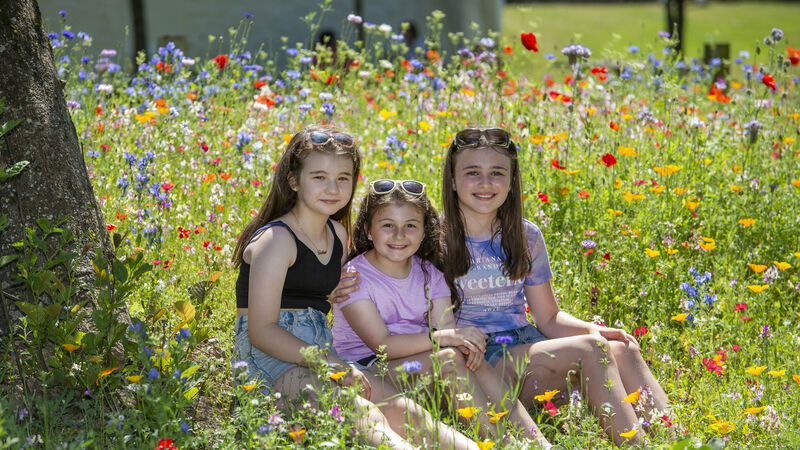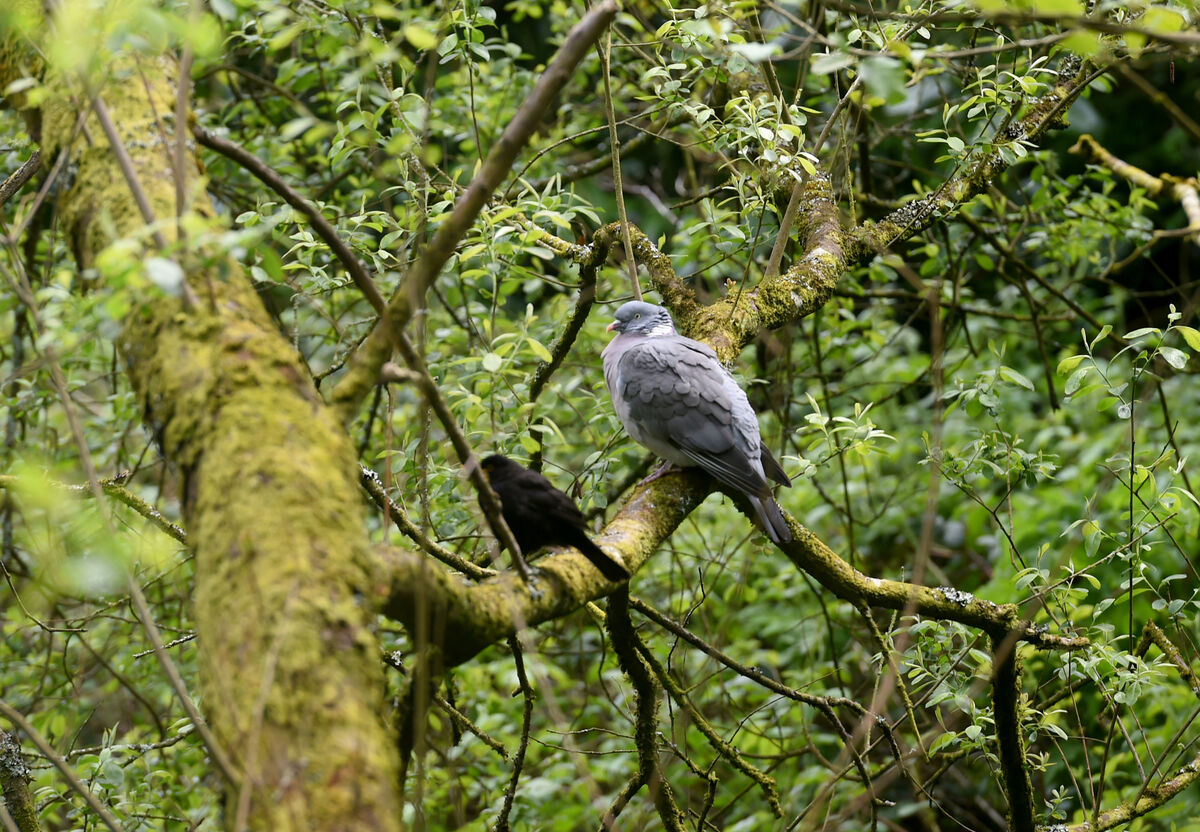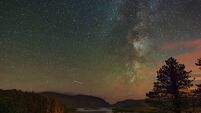Anja Murray: Access to nature should be a right rather than a luxury

Gabrielle and Julia O'Connor with their cousin Maggie O'Riordan, Midleton enjoying the sunshine in the wild flowers in the Ballincollig Regional Park last year. Picture: Dan Linehan
There is a perception that ‘nature’ is something to experience when on holidays, in exotic places such as South Africa, Australia, or south-east Asia. In Ireland, there are plenty of places too where we can immerse ourselves in stunning scenery and visit beautiful natural habitats. We have some wonderful national parks that are well worth visiting. Even just being ‘in the country’ can offer sublime wildlife experiences, whether wandering through a small patch of bluebell-filled woodland in spring or admiring the primroses growing in the hedgerows at this of year.
But we rarely think about the significance of nature in our towns and cities. Of course we all know that it’s nice to watch swans on the canal, to see herons perched by urban waterways, to hear birdsong when out for a walk, and see bees and butterflies in parks and gardens. Plenty of us do our bit for pollinators, and are delighted to get a glimpse of an urban fox on city streets after dusk. But there is very little thought given to just how much potential there is to transform urban areas into places where people and nature have at least as much right to space as concrete, tarmac and cars.
During lockdown, city dwellers experienced the joy of hearing birds sing louder and clearer than before without being drowned out by the constant hum of cars, trucks, buses and motorbikes. Children played on the street more and neighbours were able to chat without feeling that the pavement is no place to linger. Since things have opened up again, we are all using outdoor spaces far more than at any time in living memory.
Civic spaces offer safe environments for people to spend time and most of our towns and cities have public space aplenty. Parks, open squares, pavements, roads, quaysides, all these and more are public spaces: places that could be used by children to play, where dogs and dog walkers can loiter, where neighbours can stop and chat a while, and where friendly exchanges with strangers occur. Where a busy road fills the air with noise and the lungs with noxious gasses, the tendency is neither to play, to linger, nor interact with one another. Walking and cycling through the chaos of car traffic is stressful and off-putting.
We are in the process of rethinking our city spaces and how we use them. The legacy of extreme dominance by concrete and cars makes reclaiming cities for people and nature a challenging task. Only tentative steps are being taken toward providing city streets that are friendly for pedestrians, cyclists, wheelchair users, children and buggies. The extent to which nature features in these discussions and plans is pallid. While we reassess our relationship with urban outdoor spaces, and hopefully overcome the dominance of automobiles, we must also widen our thinking to encompass nature.
Imagine our towns and cities with patches of native trees as a frequent feature, adding colour, texture, dappled light, birdsong, cleaner air and numerous health benefits. Birch trees with their pale papery bark and light touch heart-shaped leaves. Rowan trees with their feathered leaves, white flowers and fiery red leaves and berries in autumn. Picture residential areas where car lanes don’t take up most of the space or assume right of way, but instead where space for people and plants are in balance with access routes.

Parks needn’t consist of sterile green lawns, but swathes of flower-rich grasslands, tactile play areas, wild corners, and an assortment of native trees and shrubs all providing habitat for bees, hoverflies, butterflies, moths, lots of different birds, frogs, and so much more. Open resources for green spaces could offer sufficient insect resources for wondrous birds such as swifts and swallows to awe us each summer day with their aerial acrobatics. House sparrows might once again fill trees with their chattering. Even in the simple local park, watching plush thrushes forage for bugs and worms in the soil is time well spent.
These are experiences that everyone should be exposed to, on a daily basis, especially those living in towns and cities. It is a twisted assumption that we need to take a trip away to be mentally and emotionally nourished by the colours, textures, shapes, smells and sounds of nature. We know, through a convergence of research and discoveries in genetics, neuropsychology, and evolutionary psychology that even though many of us today live in urban environments, our minds are adapted to be among the colours, textures, sounds and movement of natural ecosystems.
This has enormous implications for the health of our human societies and the health of the natural world. It is up to us to reclaim the right of access to nature in public spaces and challenge the dominance of car-associated infrastructure.
The daily walk or cycle to school, work, shops, and all our outdoor interactions could be filled with the opportunity to see the seasons unfold, to notice the extraordinary vivid yellow petals of a buttercup, or pause as screeching swifts or hollering geese fly overhead. These are all experiences that provide a crucial antidote to stress and enhance our physical and mental wellbeing.
In Ireland, we know this. We understand that being in nature is good for us and should be taken as a right rather than a luxury. In a poll carried out for the EPA, 84% of those polled said that access to nature was important for their physical and mental health. This access to nature in towns and cities is crucial to each of us having the ability to maintain a relationship with the natural world, not just when we're on holidays, but in our everyday lives.
- Anja Murray is an ecologist, broadcaster, regular presenter on ‘Eco Eye’ on RTÉ 1 and writes the weekly ‘Nature File’ on RTÉ Lyric FM.








